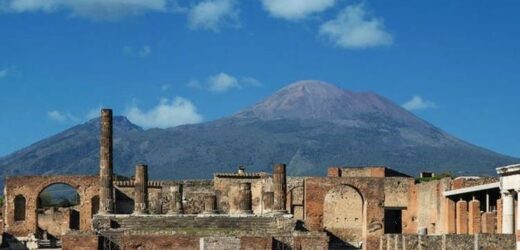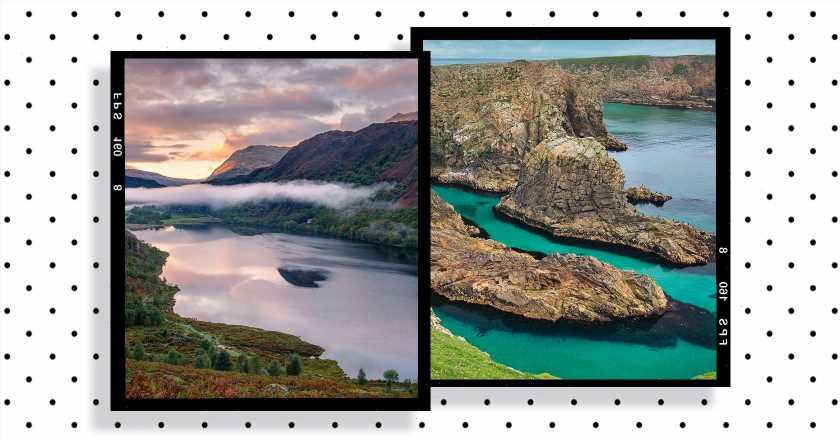Pompeii: Expert takes a look at the victims of Mount Vesuvius
We use your sign-up to provide content in ways you’ve consented to and to improve our understanding of you. This may include adverts from us and 3rd parties based on our understanding. You can unsubscribe at any time. More info
Pompeii was obliterated by one of the most deadly volcanic eruptions in history. Mount Vesuvius, which sits majestically above the former city, erupted in 79 AD and paved the way for destruction, leaving in its wake countless dead. Molten rock was thrown from into the sky, as well as pulverised pumice and hot ash at a rate of 1.5 million tonnes per second over the city’s 12,000 residents.
Many were left frozen in time, the result of thermal shock.
It was once widely held that Vesuvius erupted in one fateful explosion; Pompeii’s inhabitants without a chance of escape.
Yet, more recent analysis and research suggests that the volcano spewed its contents not in one intense batch, but, rather, over a period of nearly 24 hours.
Dougal Jerram, a geologist who has studied the remnants of the ancient Roman city, told the Smithsonian Channel’s documentary, ‘Secrets: Gangs of Pompeii’, that myriad evidence at the site suggests those living in the city would have raced to escape, while others may have chosen to stay.


He said the key to understanding the “cataclysmic eruption” is that it did not take place in an instant, having examined the stone layers and sediment from the deposit of the eruption episode, allowing him to read the various stages of the eruption.
He said: “People think that the whole eruption happened almost instantaneously, but actually this white pumice built up to about this point over seven hours.”
Experts have analysed the Pompeii suburb of Oplontis as an example of how the eruption came in waves.
JUST IN: Brexit Britain WIN as Galileo alternative given boost with £200m cash

There, a wealthy family took refuge in a basement storeroom shortly after the first eruption at 1pm, collecting all their moveable wealth in the knowledge that thieves and bandits were rife in the city as it crumbled; they were soon killed by the eruption.
Researchers suspect that shortly afterwards, a second group entered the storeroom and took the valuables.
At 8pm – seven hours after the family died – the volcano entered its second stage of eruption.
Here, a different type of magma slowly covered the city.
DON’T MISS
Marburg virus panic as 155 may be infected by deadly bleeding disease [REPORT]
Archaeology: ‘Flabbergasted’ researchers make Cerne Abbas Giant find [INSIGHT]
Should have chosen the UK! Musk grills Germany as £5bn Tesla factory [ANALYSIS]


Yet, the pumice it produced is still very light in colour and low down in the wall of ash that has been left behind, proving that there was yet more to come.
At 7am the following morning, Vesuvius entered its final and most deadly phase.
Talking through the various layers of pumice, Mr Jerram explained: “As you move up you can see that there’s a sharp transition: you go from this gravelly layered grey pumice horizon, about ten hours or so or deposit within there, and then it becomes a sharp change.
“The size of the particles are much more varied, there’s a lot of small particles in there, and you can actually see layers in it that show me that there was current, there were turbulent currents depositing this material.”

The distinct layer of solidified ash is evidence of high-speed current of heated gas and volcanic debris.
Known as a pyroclastic flow, it devastated everything in its path.
Because of the nature of the event, researchers have been able to study the city’s inhabitants and way of life in fine detail.

Fully intact skeletons have been found scattered around the site.
Whole families have been unearthed, often hunched together against the powerful lava flows.
Their ancient goods and jewellery were kept in near perfect condition, some of which ancient Roman professor Mary Beard examined in 2019 during her documentary, ‘Pompeii with Mary Beard’.
Here, she was given the chance to look through and try on some of the treasures left behind by wealthy individuals victims of the eruption, noting that one of the bangles was extremely “heavy”, hinting at its worth.
Source: Read Full Article


